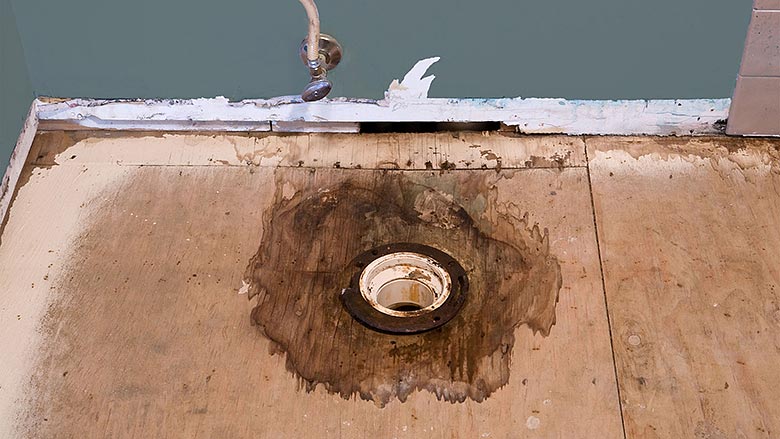Ways to Repair a Water-Damaged Wall in the Bathroom
Ways to Repair a Water-Damaged Wall in the Bathroom
Blog Article
Are you interested in critical information around How to Repair and Prevent Bathroom Water Damage?

The washroom is exceptionally vulnerable for damp build-up and also possible water damages due to the frequent use water in it. This short article supplies straightforward examination strategies to help spotting water damage risks.
The regular use water in the shower room makes it exceptionally at risk for wet buildup and potential water damage. By inspecting it regularly, you can reduce water related problems.
The adhering to collection of examinations is very easy to execute and also ought to be done when in every 3 months in order to maintain your bathroom in good shape and to stop possible water problems brought on by the tub, the shower, pipeline joints and plumbing, sinks, cupboards, as well as the toilet
Do not overlook performing these inspections and also be complete while doing them. Keep in mind that these easy examinations can conserve you a great deal of cash by giving early indicators for water damages
Tub and Shower
The shower as well as bath tub need special attention and also upkeep. Examine the ceramic tiles and also replace if split. Ensure that there is no missing out on grout in between the tiles. Evaluate as well as change split caulking at joints where the walls fulfill the floor or the bath tub. Clogged drains pipes as well as pipelines issues will certainly stop the tub from drying out and also may suggest major issues under the bathtub. Talk to an expert right away to prevent architectural damages. Take notice of discolorations or soft locations around the bathtub wall surfaces as they may suggest an internal leak.
Plumbing
Signs for water damages are tough to identify because many pipes are installed inside the wall surfaces.
Pay unique interest to flooring and also walls wetness as well as discolorations as they may indicate an unseen plumbing trouble. Check moisture levels in adjoining spaces as well.
Sinks and also Cabinets
Sinks and cabinets are revealed to moisture and also moisture daily and also are often forgotten. Inspect consistently under the sink and also on the counter top over it. Fix any drip in the trap as it might recommend drain troubles. Look around the sink, sluggish draining pipelines may indicate a blocked drain. Replace sink seals if they are split or loosened.
The Commode
The toilet is a susceptible water junction. Inspect the water lines and also search for leaks around the bathroom seat, in the pipe, and also under the water container. If you detect any indications of wetness on the flooring around the commode, look for leaks in the toilet rim and storage tank seals.
Know that hanging commode dish antiperspirants increases the chances for blockages.
TIPS TO PREVENT WATER DAMAGE IN THE BATHROOM
The average household uses approximately 80-100 gallons of water per person per day. For a family of 4, that's almost 2,500 gallons of water a week! The largest portion of this consumption comes from bathroom use. Flushing the toilet uses the most water, followed by taking a shower or bath. With that much water running through the home, water damage in the bathroom is bound to happen. Knowing how to spot signs of a water leak is essential to preventing long-term damage. This guide provides you with tips to reduce the impact of water damage on your bathroom.
CAUSES OF BATHROOM WATER DAMAGE
Pipe breaks are the most common cause of water damage we see in our daily jobs. The age of a pipe plays a large role in a pipe break as well as corrosion. Over time, the metal begins to break down, allowing water to escape. Frozen pipe breaks are also a concern in the winter months. Toilet overflows caused by paper products or children flushing inappropriate items. Degraded caulking around the toilet or bathtub can allow water seepage, sometimes behind the fixture, into the subfloor or walls. Condensation forms when the water in a pipe is cooler than the air temperature. Beads of water form on the exterior of the pipes, sometimes so much so that the water begins to drip and pool below. Sink or shower backups created by poor drainage. HOW TO PREVENT WATER DAMAGE IN YOUR BATHROOM
Inspect your toilet supply line for worn or frayed hoses and replace them as needed. Winterize your plumbing to prevent a frozen pipe break. Use vent fans to prevent condensation that can lead to mold growth. Routinely check and replace degraded caulking around your toilet or bathtub. Increase the temperature in your toilet tank and insulate your pipes during the warm summer months to keep condensation from forming. Use child safety locks on the toilets. Flush only toilet paper. "Flushable" wet wipes are actually not good for your plumbing system. Additionally, feminine hygiene products should not be flushed. Prevent water from escaping the tub or shower. Make sure shower curtains are in good condition. Inspect shower doors and replace the seal strip if necessary. Wipe up any water that accumulates on the floor and use bath mats. Water left to sit can cause damage to the tiles and flooring. Refrain from using bath products containing heavy oils to avoid a clogged drain.

As a serious person who reads on How to Repair and Prevent Bathroom Water Damage, I imagined sharing that chunk was smart. Appreciated our entry? Please share it. Help somebody else locate it. I treasure reading our article about Looking for Signs of Water Damage in the Bathroom.
Schedule Estimate Report this page